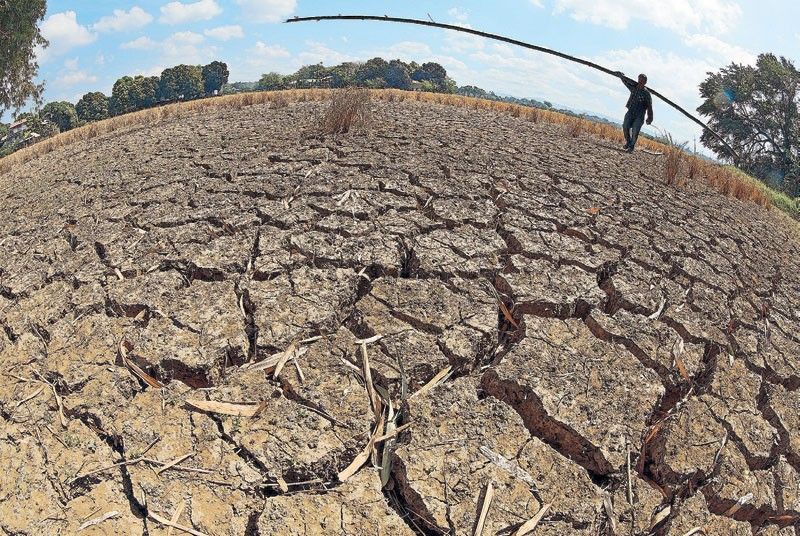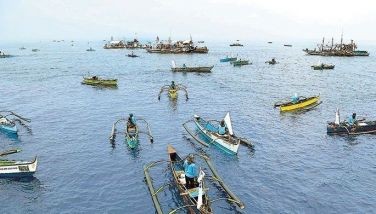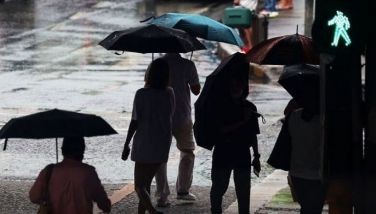Pagasa declares onset of El Niño

MANILA, Philippines — A severe dry spell looms in the country with the onset of the El Niño phenomenon, the impact of which would be felt toward the end of the year, the Philippine Atmospheric, Geophysical and Astronomical Services Administration (PAGASA) said in an advisory yesterday.
“Recent PAGASA climate monitoring and analyses indicate that the unusual warming of sea surface temperatures along the equatorial Pacific that was established in March 2023 has further developed into a weak El Niño, which show signs of strengthening in the coming months,” PAGASA said.
The World Meteorological Organization (WMO) yesterday said the El Niño weather pattern emerged in the tropical Pacific for the first time in seven years.
El Niño is linked to extreme weather conditions from tropical cyclones to heavy rainfall to severe droughts.
State weather forecasters said El Niño, characterized by the rise of sea surface temperatures in the central equatorial pacific, will be moderate to strong and will persist until the first quarter of 2024.
The Department of Agriculture (DA) said it has set in place measures to cushion the impact of the dry spell on water supply and on food security.
Camarines Norte and Southern Leyte are expected to experience drought conditions, or below normal rainfall conditions for three to five months, by December.
In Luzon, 26 areas may experience drought conditions by January 2024, while a total of 17 provinces may experience dry spell, or below normal rainfall conditions for two to three consecutive months.
State weather forecasters said the number of affected provinces may still increase as projections are based on current models.
With El Niño, fewer tropical cyclones are expected to enter the Philippine area of responsibility (PAR) this year.
From a yearly average of 19-20 cyclones, only around 10-14 cyclones are expected to enter PAR next year. However, cyclones with stronger character may be experienced.
Still, normal to above normal rainfall conditions are expected to continue from this month to September in most parts of the country due to the prevailing northwest monsoon.
Esperanza Cuyanan, PAGASA officer-in-charge, warned that the adverse impact of El Niño may be fully felt by the next dry season in the country, especially in terms of water shortages.
Water levels in dams in the country may go down starting November until January 2024, according to forecast. She advised the public to conserve water and electricity while it is still early.
“The worst that we can experience is dry season next year when water saved during this rainy season runs out. We’ll have shortage next year during the dry season,” Cuyanan said in Filipino.
PAGASA clarified that its El Niño advisory is based on three-month average of sea surface temperature anomalies of above 0.5 degree Celsius.
Angat level
Water level of Angat Dam, meanwhile, has further dropped to near critical level but water concessionaires assured the public of continued water service.
Latest PAGASA monitoring showed Angat’s water level at 181.53 meters as of 8 a.m. yesterday, 0.36 meters lower than 181.93 meters a day earlier and only 1.57 meters from the critical level of 180 meters.
Metropolitan Waterworks and Sewerage System (MWSS) division manager Patrick Dizon said they would meet with PAGASA, the National Water Resources Board (NWRB) and the National Irrigation Administration (NIA) to discuss the problem.
“Under the Angat Dam protocol, when the reservoir elevation reaches 180 meters, the water allocation of irrigation will be reduced to prioritize domestic water supply,” he said.
“We are going to see PAGASA’s projection of rainfall in watershed areas, if there will be intense rain to help raise the elevation of the reservoir,” Dizon said.
The MWSS has yet to determine the amount of water allocation it will request from the NWRB.
“For now, we can’t say what level of raw water allocation we will ask because we need to manage the current water levels in the Angat reservoir,” Dizon said.
West zone concessionaire Maynilad Water Services Inc. said it has a program in place to mitigate the possible impact of El Niño.
“This involves the production of additional supply through alternative raw water sources, and through water loss recovery from our pipe replacement and leak repair activities,” Maynilad corporate communications head Jennifer Rufo said.
“As we work closely with MWSS to augment available supplies, we call on all water consumers to help by using water responsibility,” Rufo said.
Currently, Maynilad is still assessing the actual impact of the reduction of Angat water allocation to 50 cubic meters per second (CMS) on its service levels this month.
“Having said that, even if a 50 CMS allocation will have an impact on service levels this July, the water situation would be better now compared to how it was last April 1 to 15 when the allocation was also at 50 CMS and there were service interruptions,” Rufo said.
“This is because we now have rains over the watersheds, and our various supply augmentation projects (i.e., reactivation of deep wells, recovery of water losses and production of potable reused water) have already been generating additional supply,” the Maynilad official said.
East zone concessionaire Manila Water Company Inc. said it has been preparing its supply augmentation measures long before the official declaration of El Niño’s onset.
Part of the measures is drawing 110 million liters per day (MLD) from Laguna Lake through its Cardona Water Treatment Plant, Manila Water corporate communication affairs group director Jeric Sevilla said.
Manila Water is also tapping deep wells, which are ready to supply up to a maximum of 115 MLD.
“We have also completed Phase 1 of our Calawis Project in Antipolo which will give around 20 MLD and scalable up to 80 MLD while Phase 2 of our East Bay Water Supply Project which can provide 50 MLD drawing water from the eastern flank of Laguna Lake. 15 MLD from our Marikina Portable Treatment Plant is also available,” Sevilla said.
“We will continue and even intensify our preparations to help ensure that our customers will continue to enjoy 24/7 water supply with pressure within regulatory limits even during El Niño,” Manila Water Corporate communications head Dittie Galang said.
Food supply
At a press briefing, DA director for Field Operations Service U-Nichols Manalo said they have prepared a whole-of-government approach in dealing with El Niño in compliance with President Marcos’ directive.
“The President made the instruction of a whole of government approach, science based, we’re preparing for it. We should not respond only when the problem is already here in December and January or when there is already drought in 26 provinces,” Manalo said at a briefing.
The DA is the lead agency in the food security group under the national El Niño team, composed of different government agencies.
Manalo said that they are also coordinating with local government units, irrigation associations and rice farmers in preparation for the El Niño.
He noted that some areas in Davao del Sur experiencing below average rainfall have started planting their crops earlier to adjust to changing weather conditions.
The DA official said the NIA has also started repairs and maintenance of its irrigation systems.
The DA is also part of the water and health security groups, through its attached agencies and bureaus like NIA and the Bureau of Animal Industry.
- Latest
- Trending





























